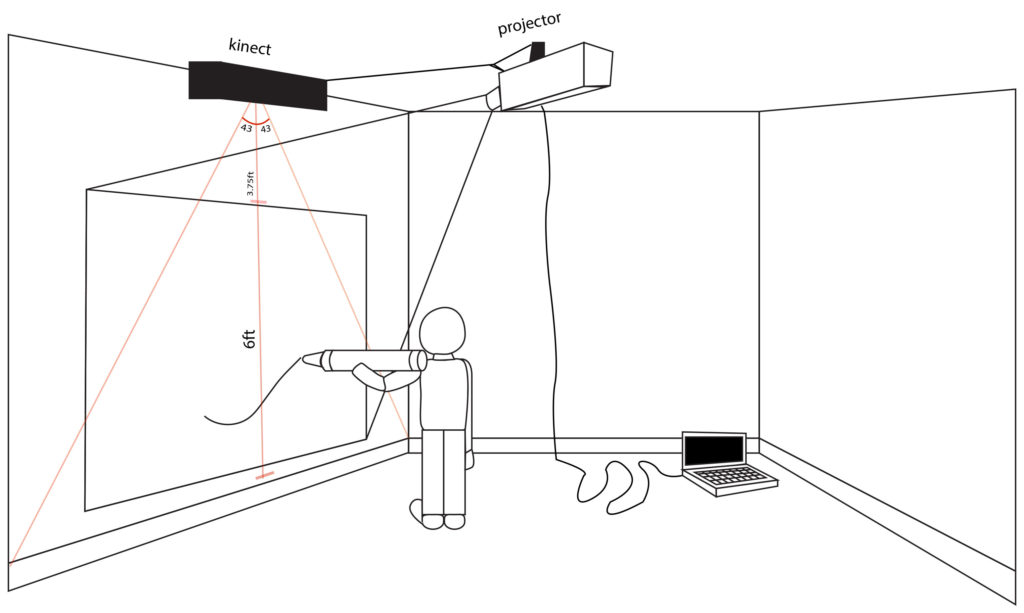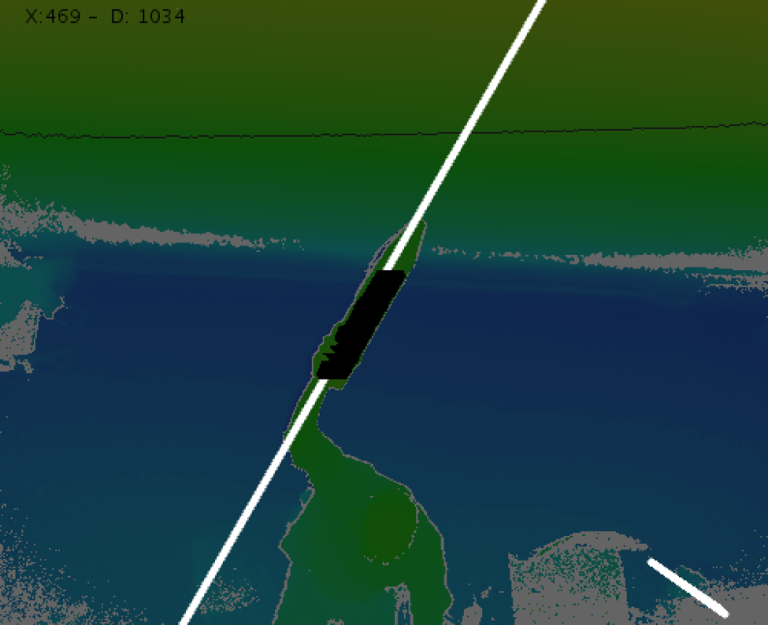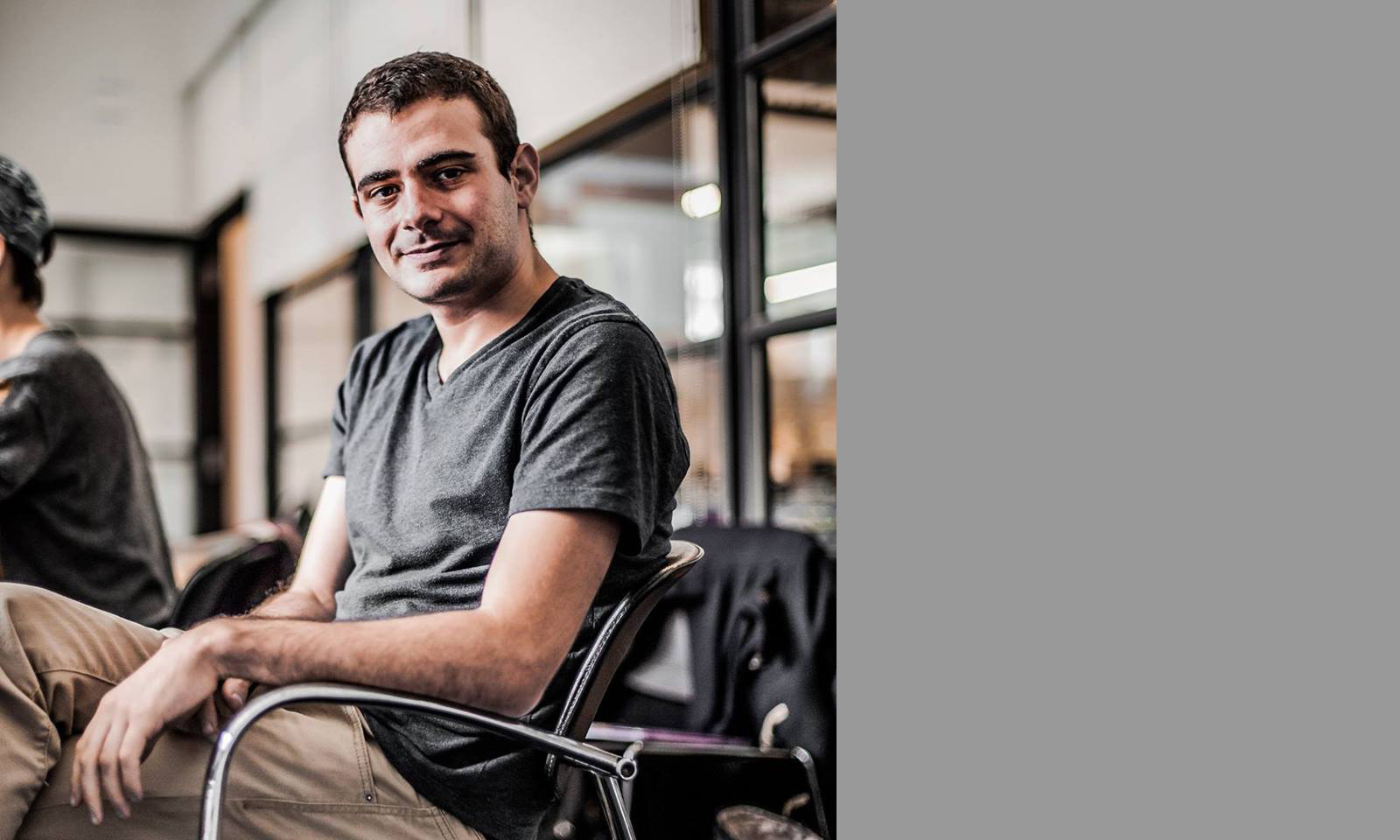Design Challenge
How can we foster the freedom and playfulness of a child drawing on the wall in a public space?
Prototype 1
Our first prototype required my partner and I to manually map the physical interactions of our users with a custom paint visualization.
From our prototype, we were able to focus on the interaction we sought such as determining the size of the crayons. We were also able to see that drawing on the wall and throwing a ball against a wall where two very different interactions that didn’t necessarily belong together.
Design
 We used the Kinect to capture color and depth information. With Processing, we tracked the tips the crayons along with their corresponding colors.
We used the Kinect to capture color and depth information. With Processing, we tracked the tips the crayons along with their corresponding colors.
After initial user testing, we wanted a physical manifestation of an eraser and not a digital refresh button. We used a painting roller for the eraser; this became a coveted item for children engaging with the Color Wall.

The position of the tip was mapped to the projection using a numeric model similar to a steady stay thermodynamics problem. It was satisfying to engage in a whimsical project using my background in engineering.
In Use
The games that children created were varied.
People realized they could paint with their colored clothing on the wall, which was an interesting, unexpected interaction.
My partner and I are currently in dialogue with institutions which create children’s learning installations. The Color Wall is intriguing to them because it engages many children simultaneously while employing indestructible active elements.
Thanks To:
My partner, Esther Hersh.

